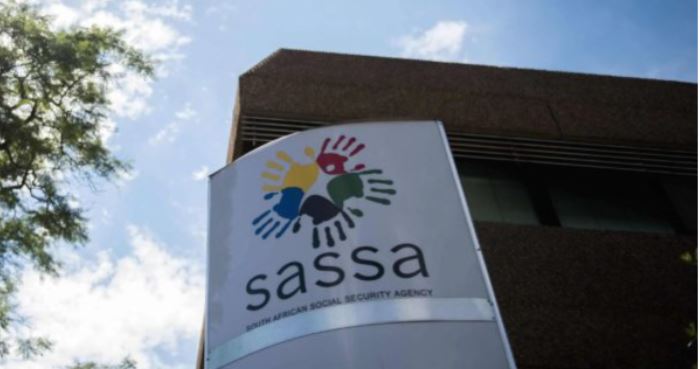Here is your SASSA payment dates for July


SASSA Payment Dates for Grant Categories in July 2024

SASSA has released payment dates for various grant categories, including old age, disability, and children’s grants for July 2024.
This comes after the South African Social Security Agency (SASSA) released the payment schedule for the 2024/25 financial year.
According to SASSA, the first week of the month is reserved for elderly, child, and disability grant payments.
Grant Payment Order:
- Older Persons Grants: Tuesday 2 July 2024.
- Disability Grants: Wednesday 3 July 2024.
- Children’s Grants: Thursday 4 July 2024.
The permanent SASSA grants have been increased.
Finance Minister Enoch Godongwana delivered his 2024 Budget Speech to Parliament earlier this year.
Permanent social grants are increased to keep pace with inflation and increase access:
- An increase of R100 for old age, war veterans, and disability and care dependency grants. This amount will be divided into R90 effective from April, and R10 effective October;
- A R50 increase to the foster care grant; and
- A R20 increase to the child support grant.
Contact Information:
- For any further queries, please get in touch with SASSA directly:
- Contact the SASSA Toll-Free Call centre on 0800 60 10 11
- Contact the SASSA Head Office on 012 400 2322
- Email SASSA Head Office at: Grantsenquiries@sassa.gov.za
- Contact details of SASSA offices across the country: SASSA offices
Do you have more information about the story?
Please send us an email to bennittb@rekord.co.za or phone us on 083 625 4114.
For free breaking and community news, visit Rekord’s websites: Rekord East
For more news and interesting articles, like Rekord on Facebook, follow us on Twitter or Instagram.
SDGs, Targets, and Indicators Analysis
1. Which SDGs are addressed or connected to the issues highlighted in the article?
- SDG 1: No Poverty
- SDG 3: Good Health and Well-being
- SDG 4: Quality Education
- SDG 10: Reduced Inequalities
The article discusses the release of payment dates for various grant categories, including old age, disability, and children’s grants. These grants are directly related to addressing poverty (SDG 1) and reducing inequalities (SDG 10). Additionally, the mention of disability grants and the need for contact with SASSA for queries implies a connection to good health and well-being (SDG 3). The availability of children’s grants also contributes to ensuring quality education (SDG 4) by supporting families in providing for their children’s needs.
2. What specific targets under those SDGs can be identified based on the article’s content?
- Target 1.3: Implement nationally appropriate social protection systems and measures for all, including floors, and by 2030 achieve substantial coverage of the poor and the vulnerable.
- Target 3.8: Achieve universal health coverage, including financial risk protection, access to quality essential health-care services, and access to safe, effective, quality, and affordable essential medicines and vaccines for all.
- Target 4.5: Eliminate gender disparities in education and ensure equal access to all levels of education and vocational training for the vulnerable, including persons with disabilities.
- Target 10.4: Adopt policies, especially fiscal, wage, and social protection policies, and progressively achieve greater equality.
The article highlights the implementation of social protection systems through the release of grant payments, addressing Target 1.3 under SDG 1. The mention of disability grants connects to Target 3.8 under SDG 3, which aims to ensure access to quality health-care services for all. The availability of children’s grants contributes to Target 4.5 under SDG 4, which focuses on equal access to education for vulnerable groups. Lastly, the increase in permanent social grants aligns with Target 10.4 under SDG 10, which aims to achieve greater equality through fiscal and social protection policies.
3. Are there any indicators mentioned or implied in the article that can be used to measure progress towards the identified targets?
- Indicator 1.3.1: Proportion of the population covered by social protection floors/systems, by sex, distinguishing children, unemployed persons, older persons, persons with disabilities, pregnant women, newborns, work-injury victims, and the poor and vulnerable.
- Indicator 3.8.1: Coverage of essential health services (defined as the average coverage of essential services based on tracer interventions that include reproductive, maternal, newborn and child health, infectious diseases, non-communicable diseases, and service capacity and access).
- Indicator 4.5.1: Parity indices (female/male, rural/urban, bottom/top wealth quintile, and others such as disability status, indigenous peoples, and conflict-affected, as data become available) for all education indicators on access, participation, and completion.
- Indicator 10.4.1: Income growth of the bottom 40 percent of the population at a rate higher than the national average.
The article does not explicitly mention these indicators. However, the information provided about the release of grant payments and the increase in permanent social grants implies progress towards the identified targets. To measure progress, data on the proportion of the population covered by social protection systems (Indicator 1.3.1), coverage of essential health services (Indicator 3.8.1), parity indices for education indicators (Indicator 4.5.1), and income growth of the bottom 40 percent of the population (Indicator 10.4.1) would need to be collected and analyzed.
4. Table: SDGs, Targets, and Indicators
| SDGs | Targets | Indicators |
|---|---|---|
| SDG 1: No Poverty | Target 1.3: Implement nationally appropriate social protection systems and measures for all, including floors, and by 2030 achieve substantial coverage of the poor and the vulnerable. | Indicator 1.3.1: Proportion of the population covered by social protection floors/systems, by sex, distinguishing children, unemployed persons, older persons, persons with disabilities, pregnant women, newborns, work-injury victims, and the poor and vulnerable. |
| SDG 3: Good Health and Well-being | Target 3.8: Achieve universal health coverage, including financial risk protection, access to quality essential health-care services, and access to safe, effective, quality, and affordable essential medicines and vaccines for all. | Indicator 3.8.1: Coverage of essential health services (defined as the average coverage of essential services based on tracer interventions that include reproductive, maternal, newborn and child health, infectious diseases, non-communicable diseases, and service capacity and access). |
| SDG 4: Quality Education | Target 4.5: Eliminate gender disparities in education and ensure equal access to all levels of education and vocational training for the vulnerable, including persons with disabilities. | Indicator 4.5.1: Parity indices (female/male, rural/urban, bottom/top wealth quintile, and others such as disability status, indigenous peoples, and conflict-affected, as data become available) for all education indicators on access, participation, and completion. |
| SDG 10: Reduced Inequalities | Target 10.4: Adopt policies, especially fiscal, wage, and social protection policies, and progressively achieve greater equality. | Indicator 10.4.1: Income growth of the bottom 40 percent of the population at a rate higher than the national average. |
Source: citizen.co.za








